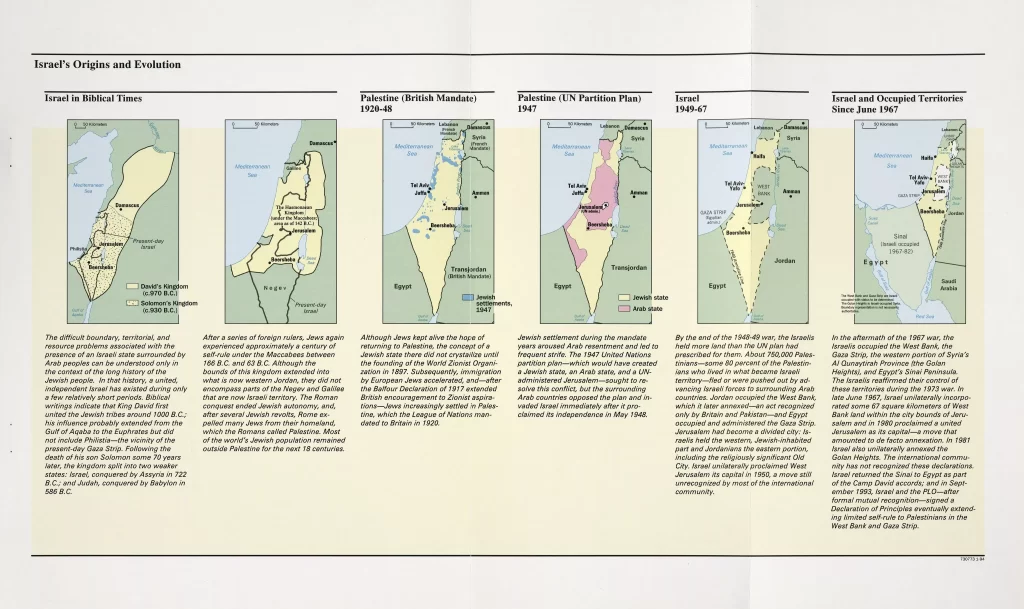
Christian Intelligence Report
October 2019 Middle East Briefing
Have you ever been someplace where the background noise was so loud that it was impossible to hold a conversation with the person next to you? That’s how the situation feels in the world is right now.
The U.S. military and the Central Intelligence Agency (CIA) always prepare briefing papers for the president so he can make an informed decision. Likewise, I have prepared a briefing on the Middle East for Christians.
President Trump recently addressed the nation and stated he did not want American soldiers involved in endless wars and that is why he had ordered the withdrawal of troops from Syria.
The fighting in the Middle East has gone for centuries and there seems to be no end to the hostilities. History is not a popular subject among American school children and what I will share in this briefing is unknown to the majority of the American people. At the conclusion you will be able to make an informed decision as to whether President Trump made the correct choice.
NORTH KOREA
If we begin on the international level, the noise level is deafening. Kim Jong-un just announced to the world that he is tired of waiting to make a deal with the United States. He has had several tantrums and these played out when the North Korean military launched a few intermediate rockets into the Sea of Japan. These rockets are not cheap and to just shoot them indiscriminately is a waste of money.
He wants to force President Trump back to the bargaining table so that the U.S. will lift its sanctions on North Korea. Kim Jong-un knows that if he attacks South Korea, there will be a swift and deadly response by the United States. Nuclear weapons will certainly be used, and when the smoke clears, millions of Koreans on both sides will be dead, and North Korea will have been totally destroyed along with its dictator.
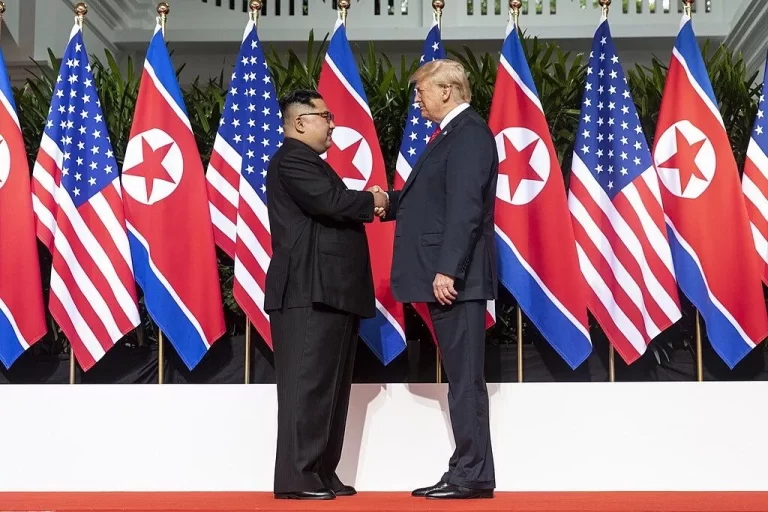
ISRAEL
The situation in the Middle East is a quagmire of endless wars. When the Zionistic movement began to encourage Jews to move to Palestine in 1898, there wasn’t too much commotion since it was a province of the Ottoman Empire. When the Jews began to arrive from Europe, they purchased land from Palestinian landowners.
After World War I was over in 1918, the Ottoman Empire was carved up into several states by the British and French governments. Palestine became a British mandate and as such more Jews were able to move to Palestine.
They built socialistic farms called kibbutzes where all the members were owners. There were thousands of people living and tending a single farm. Members were paid salaries and any profits were split evenly among them. No one had any personal property. It was a true communist setup aside from the fact that there was no profit sharing in communism.
By the late 1930’s the Palestinians began to complain there were too many Jews immigrating and they were taking over the economy, including farming, so the British government began to restrict the number of European Jews that would be allowed to immigrate.
The Jews formed military units during World War II and offered the British government their services. Due to the intensity of the war, the British government officially sanctioned them as auxiliary brigades and armed them.
When the war was over in 1945, the Jews demanded a homeland in Palestine which the British opposed. Relations were cordial in the early years, but after 1945, the Jews began to hate the Palestinians for their unwillingness to give up ancestral land that had been in their possession for 1,900 years.
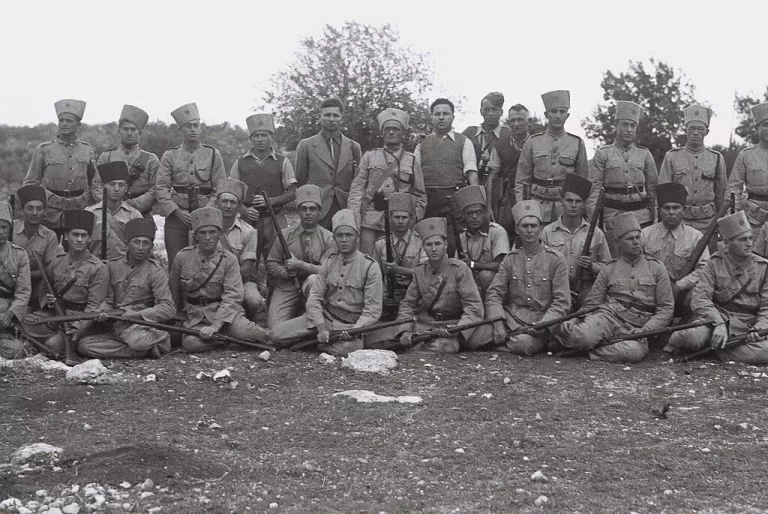
JEWISH TERRORIST GROUPS
The Jews in the mid 1920’s formed a secret government and operated several terrorist groups like the Haganah, Irgun and Lehi.
Haganah was the largest and came into being in 1920. Leaders of this para-military group were Yitzhak Rabin, Ariel Sharon, Rehavam Ze’evi, Dov Hoz, Moshe Dayan, Yigal Allon and Dr. Ruth Westheimer.1 The Haganah morphed into the Israeli Defense Forces (IDF) after the Jewish leadership proclaimed the political State of Israel on May 14, 1948.
However, some of Haganah felt the organization was not being aggressive enough and Irgun was formed in 1931. Its founder, Ze’ev Jabotinsky, was a Russian Jewish Zionist and his closest associate was Menachem Begin, who would go on to serve as the prime minister of Israel from 1977-1983.
The British labeled the Haganah and Irgun as terrorist organizations and there were bounties on many of the leaders of these two groups, including Menachem Begin. In 1973 Begin founded the Likud, a right-wing political party. Benjamin Netanyahu who currently serves as the prime minister of Israel is also the head of the Likud party.
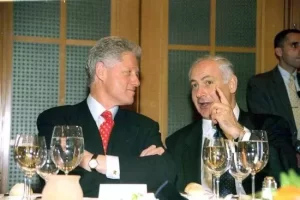
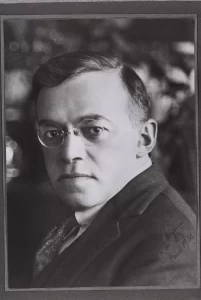

Avraham Stern was a Polish born Jew who split from the Irgun and created his own military resistance group called Lehi against the British in 1940. Even though he was Jewish and part of the Zionist movement, Stern tried to contact the Axis powers, believing that Nazi Germany was a lesser enemy of the Jews than Britain. This should not come as a surprise since the leadership of the Zionist movement had been working with Nazi Germany in transferring Jews to Palestine.2
Avraham Stern broke with Haganah and Irgun, who were cooperating with the British and allowed their men to form military units under British Army control.
The Lehi or “Stern Gang” as it was known to the British, began using terrorist attacks to sabotage railroads, blow up trains, and destroy roads, bridges and other infrastructures in Palestine. British intelligence was able to track the members and killed them for their part in the terrorist attacks. Avraham Stern was found in 1942 and British soldiers shot him dead on the spot.
The Stern Gang was weakened, but two of its members traveled to Cairo, Egypt in 1944, where they assassinated Lord Moyne, the British Minister of State for the Middle East. They were arrested and hung in 1945.
The Stern Gang consisted of hardcore Zionists whose goal was to evict the British authorities from Palestine by force, allow unrestricted immigration of Jews and set up a Jewish political state. When the United Nations sent Swedish Count Folke Bernadotte to broker peace, this did not fit the goals of the Stern Gang, whose aim also included the annihilation of the Palestinians in Israel. The Stern Gang, led by Yitzhak Shamir, who would later serve twice as the Prime Minister of Israel, ordered the murder of Bernadotte.

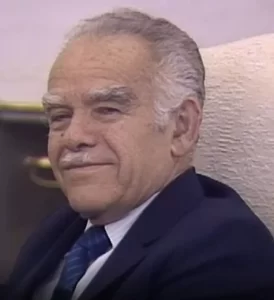
The assassination was carried out by a four member team consisting of Yehoshua Cohen, Yitzak Ben Moshe, Avraham Steinberg and Meshulam Makover. They set up a roadblock for the UN convoy carrying Bernadotte on September 17, 1948. Cohen found Bernadotte in the last car and shot him in the chest several times through an open window, together with another UN official, French Army colonel Andre Serot.
Israel declared its independence as a Jewish nation on May 14, 1948. The newly formed Israeli government had invited the United Nations to begin peace talks with the Arabs. Count Bernadotte was the UN representative, and as he traveled in a convoy led by an Israeli army vehicle, he was ambushed by the Stern Gang. Bernadotte’s killers were known to the Israeli government, but they were never brought to justice.
Yitzhak Shamir stated many years later that he ordered the murder of Count Bernadotte so that the plans for Jerusalem to be an international city under the auspices of the United Nations would be cancelled. Shamir succeeded at the expense of Folke Bernadotte and Andre Serot.
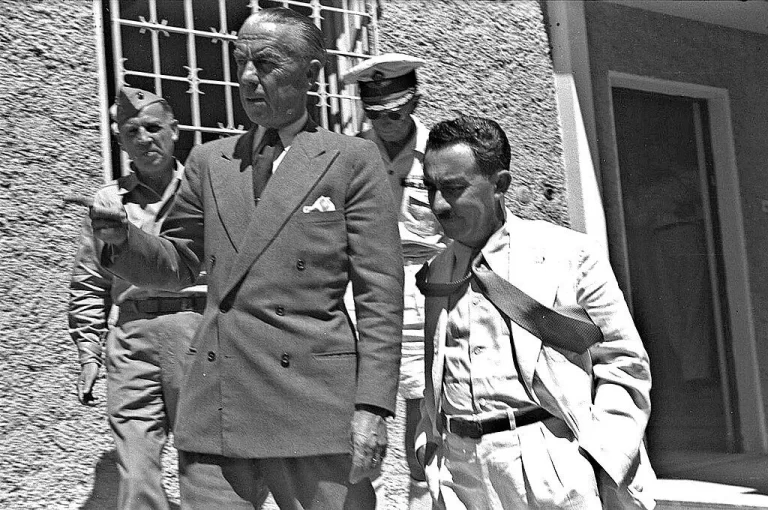
ATROCITIES
Ariel Sharon was the most notorious Israeli army officer involved in mass killings.
In October 1953 Sharon led Israeli troops in an attack on the village Qibya in the West Bank. This was in response to a Palestinian attack that had killed an Israeli mother and her two children. The Israeli unit attacked the village and killed 69 Palestinians, most of them women and children. All buildings in the village were set on fire and destroyed.
During the Lebanese war in 1982, there were two refugee camps in Beirut. Sharon serving as the Israeli defense minister ordered the camps to be cleansed of PLO fighters. During September 16-18, 1982, while Israeli troops guarded the camps, the Christian Phalange militia was used to carry out the killings. Thousands of men, women and children were slaughtered because they were fenced in by barbed wires and no weapons to defend themselves. The Phalange went from tent to tent and building to building, spraying people with automatic gunfire.


A combination of 120 Irgun and Stern Gang guerrillas attacked the village of Deir Yassin on April 9, 1948. This attack took place at night with the express purpose of taking the village and exterminating the Palestinians found therein. Some 117 men from the village who tried to defend the people were killed in the battle. The Jews proceeded to slaughter 150 people, men, women and children and throw their bodies in a well. Some of the women were raped and corpses were mutilated.
The attack on the village was publicly condemned by the Haganah leadership and by two chief rabbis in area. The Arab League responded on April 13 by attacking a medical transport unit of ambulances and trucks carrying medical and military supplies to a Hadassah hospital in Jerusalem. The brutal attack killed 79 doctors, nurses, medical students, patients, and other hospital workers. The bodies were burnt beyond recognition and buried in a mass grave.
The Palestinian militia attacked again on May 13th, this time it was the Jewish kibbutz of Kfar Etzion. This assault took place the day before the Jewish leadership would declare Israel’s independence. Among those killed were 129 Haganah and kibbutz defenders and the 15 Jewish fighters who surrendered were shot on the spot. There were an unknown number of women and children causalities.
Five Jewish men were taken alive and taken to Jordan as prisoners of war. All the buildings in the kibbutz were destroyed by fire. The bodies of the dead Jews were left on the ground. It was not until 1950 that the Jordanian government allowed Rabbi Shlomo Goren and a group of Jews to collect the remnant of the dead kibbutz members and bury them at the national Israeli cemetery of Mount Herzl.
The village was located in what is called the West Bank today and was controlled by Jordan until 1967 when Israel defeated the Arab states in the Six-Day War and took control of the West Bank. The kibbutz of Kfar Etzion was rebuilt and once again populated by Jews.
The Jewish leadership wanted to get rid of as many Palestinians as possible and used state sponsored terror to create fear among the Palestinians in an effort to get them to flee to Lebanon, Syria, Egypt and Jordan. It is estimated that some 700,000 Palestinians fled from Jewish controlled Palestine and ended up in refugee camps in the surrounding nations.
The Jewish government destroyed 400 to 600 Palestinian villages and all Palestinians living in urban areas were driven out. This ethnic cleansing by the Jewish government lasted from May of 1948 until January of 1949.
Casualties during the 1948-1949 War of Independence were 6,373 Israeli soldiers killed, 15,000 wounded and 2,000 civilians killed. The Arab League saw 5,000 soldiers and 20,000 civilians killed. There were 4,000 soldiers killed from Egypt, Jordan and Syria.
To make it worse for the fleeing Palestinian people, the governments of Lebanon, Jordan, Syria and Egypt adopted a policy that none of the refugees could settle in their nations. They would perpetually remain in the refugee camps in order to apply pressure on the Israeli government to take them back.
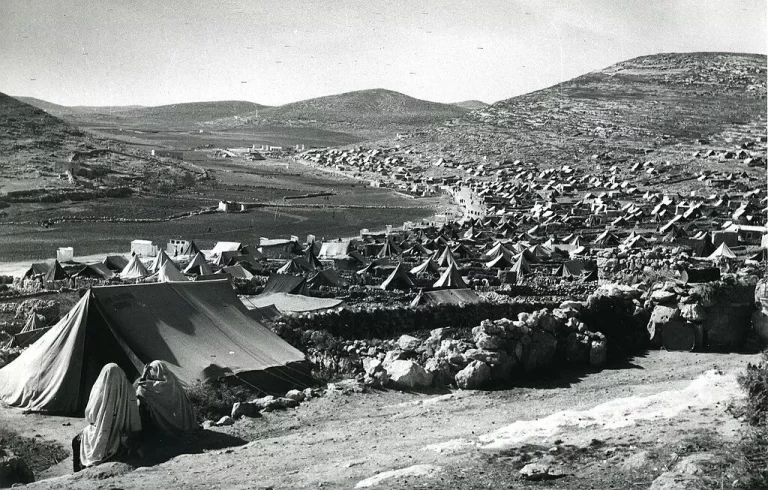
The State of Israel passed a series of laws from 1950 to 1973 which effectively stripped all legal rights from the Palestinians who fled the war and wanted to return to their homes.
For the next 69 years, the offspring of these exiles were born in refugee camps and have lived all their lives in them. Palestinians in these refugee camps in Lebanon, Syria, and Jordan are stateless.
The 1993 Oslo Accords created a Palestinian interim self-government, known as the Palestinian National Authority (PNA). The Gaza Strip and the West Bank were to be given to the PNA, but the State of Israel still controlled these enclaves. The official signing was done in Washington D.C. by Israeli Prime Minister Yitzhak Rabin, President Bill Clinton and Chairman Yasser Arafat of the Palestinian Liberation Organization (PLO) on September 13, 1993.
Israel had withdrawn all its troops from the Gaza Strip by 2005 and it is now controlled by Hamas, an organization in opposition to PLO. All Jewish settlements in Gaza were dismantled and the settlers were removed by force by the Israeli Army (IDF).
There are a number of Jewish settlements on the West Bank and the Israeli government is trying to create new Jewish settlements, which is a point of contention for the Palestinians.
The Middle Eastern nations did not approve of Jews immigrating in masse from Europe and the United States and Soviet Union backing the newly established political State of Israel. These freshly settled Jews were intent on expelling Palestinians who had lived on the land since 70 A.D., a period of 1,949 years.
Israel has fought a numbers of wars, to defend itself in 1948-49, 1956, 1967, 1973, the 1982 and 2006 Lebanon wars, and the Gaza War 2008-2009. Israel has also invaded Gaza in 2012 and 2014. Israel has no permanent peace because the threat of war is always imminent.
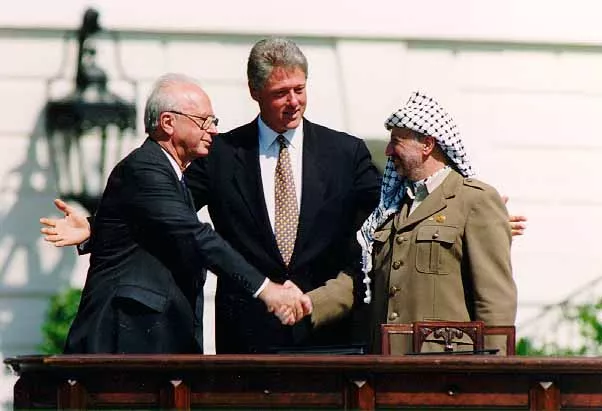
THE SYRIAN CIVIL WAR
The Syrian Civil War began on March 15, 2011 with major uprisings in Damascus and the city of Aleppo. It has now raged for more than 8 years with enormous casualties and no end in sight. Syria has a population of 18 million and it is estimated that around 117,000 civilians have died. The war’s destruction has displaced 7.6 million civilians and another 5.1 million have fled to other nations, most of them living in refugee camps.
The revolt against Syrian dictator Bashar Assad consists of several groups who oppose each other. The main opposition groups are the Free Syrian Army, the al- Nusra Front, the Syrian Democratic Forces (SDF), Al Qaeda and ISIS.
A BRIEF HISTORY OF SYRIA
Syria was occupied by France at the end of World War I, and when France surrendered to Germany in 1940, the British took over and formed a provincial government. The Syrian government did not trust the British or the French and established diplomatic relations with the Soviet Union in 1944. They signed an agreement in 1946 where Joseph Stalin promised to protect their independence.
The United States did not like the idea of the Soviet Union getting a foothold in the Middle East and the CIA was ordered to initiate a régime change in Syria. At that time the U.S. did not have an embassy in Syria, but a legation led by James Keeley Jr. Stephen Meade was the military attaché, but in reality was a CIA officer. The CIA station chief in Damascus – the capital of Syria – was Miles Copeland Jr.
The CIA “encouraged” Syrian Colonel Husni al-Za’im, who was chief of staff for the armed forces, to overthrow President Shukri al-Quwatli. This was done on March 30, 1949 and al-Za’im became the new president. His reign did not last very long as he was arrested on August 14, 1949, and executed on the same day.
The man who had overthrown Za’im and ordered his execution was Colonel Sami al-Hinnawi. He too did not last very long and abandoned power on December 19, 1949. He fled to Lebanon where he was murdered on October 31, 1950.
The man that overthrew Sami al-Hinnawi was Adib Shishakli, a Syrian army officer. His rank is unknown. In order to consolidate his power, he ordered his security forces to kill Colonel Mohammad Nasser, who was the air force commander.
In November 28, 1951 Shishakli ordered the arrest of Prime Minister Maarouf al-Dawalibi and his cabinet. He also ordered the arrest of all pro-Iraqi politicians. To consolidate his power, he dissolved all political parties and proclaimed himself President of Syria on July 11, 1953, ruling as a dictator until February 25, 1954, when he was overthrown in a coup. He fled to Lebanon and moved to Brazil. The new government sentenced him to death and he was assassinated in Brazil on September 27, 1964.
Syria had 20 different governments and four different constitutions from 1946 until 1956 and was a nation in chaos.
The governments of Syria and the Soviet Union signed an additional treaty in 1956 in which the Soviet Union guaranteed the safety of Syria. In case of war, the Soviet Union was to come to the aid of Syria. This is the treaty that Bashar Assad used when he called upon Russia to bail out his government on September 30, 2015.
Syrian President Shukri al-Quwatli and Egypt’s President Gamal Nasser announced the merger of the two nations in 1958. This fledgling nation was called the United Arab Republic and it lasted until September 28, 1961, when there was yet another military coup in Syria. It was a military régime that ruled Syria until March 8, 1963, when a group of leftist Syrian Army officers took power. This takeover was organized by the Socialist Resurrection Party, also known as the Ba’ath Party.
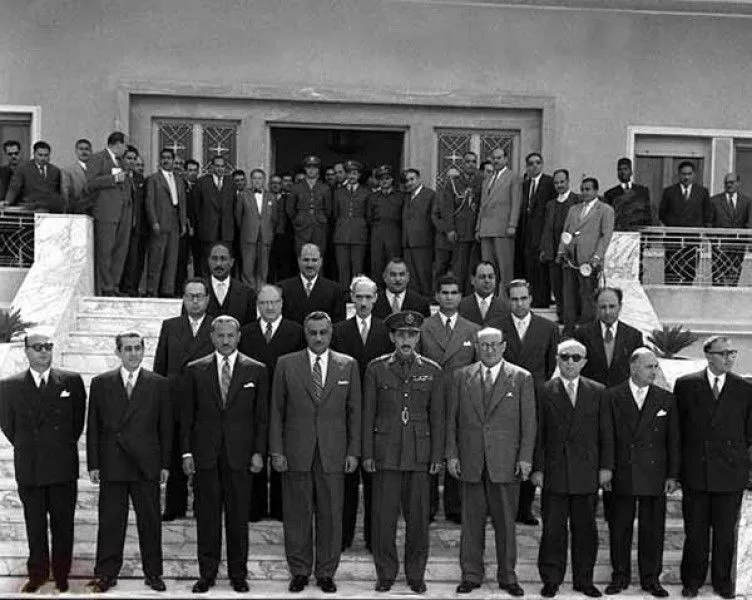
The Ba’ath Party also existed in Iraq and it took over on February 8, 1963 with its leader Saddam Hussein.
Amin al-Hafiz was a Syrian army general and he became the President of Syria from October 4, 1964 until February 23, 1966 when he was removed from office by a radical Ba’athist group, led by General Salah Jadid. Hafiz was arrested and later released to Lebanon. From there he moved to Iraq under the protection of Saddam Hussein.
From 1966 to 1970, a moderate part of the Ba’ath party ruled Syria. The PLO under Yasser Arafat tried to take over Jordan and oust King Hussein on September 6, 1970. The Jordanian army fought back and the Syrian government intervened on behalf of the PLO, invading Jordan to oust King Hussein and his government.
The Jordanian army was better equipped and trained and they counterattacked the Syrian army and inflicted heavy losses. The Jordanian air force inflicted even more losses on the Syrian army, which was forced to retreat.
Hafez al-Assad was the defense minister in the Syrian government, and on November 13, 1970, he dismissed the Syrian government and pronounced himself the new president of Syria. Assad eventually purged all opposition and became a ruthless dictator until he died on June 10, 2000.
President Assad built up a ruthless secret police which he used to arrest and arbitrarily execute political opponents. The Syrian people knew their nation was controlled by a ruthless man who would kill anyone he thought presented a threat.
Hafez al-Assad earmarked his oldest son Bassel to become the heir to the throne, but when he was killed in a car accident in 1994, the second oldest son, Bashar, was tapped to replace his brother.
Bashar graduated from the medical school of the Damascus University and did his internship as a doctor in the Syrian army. He and his wife moved to London, England in 1992 where he studied at the Western Eye Hospital and became an eye doctor.
When Bassel passed away, Hafez recalled Bashar home and began to groom him to become the next leader of Syria. Everybody thought that as a medical doctor, Bashar would be more kind, but as the world has learned, he is even more ruthless than his father and did not shy away from using chemical weapons on his own people when they revolted against the Assad dynasty in 2011.
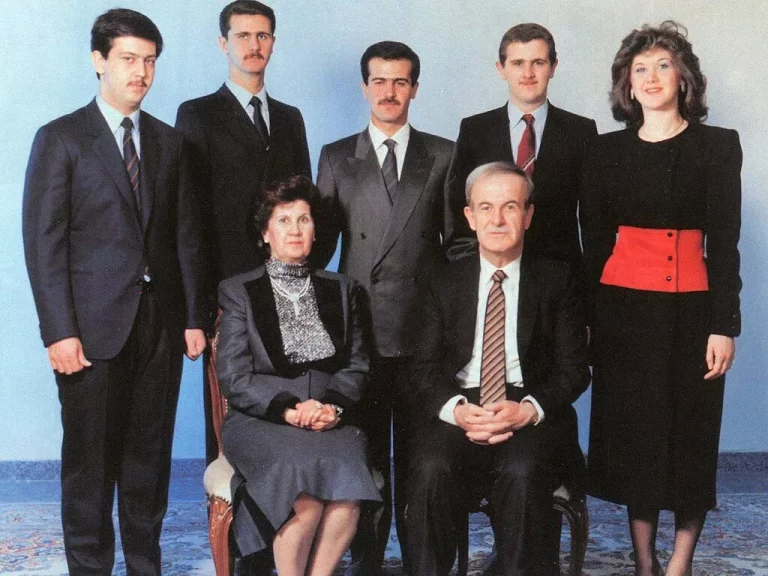
IRANIAN FORCES IN SYRIA
When Bashar al-Assad’s forces were almost defeated in 2016, Iran intervened with 2,500 soldiers. Iranian General Qassem Soleimani took control in Syria and Assad was pushed aside as the Iranian general began to assert control in Syria. The Iranians took heavy losses in the fighting and the populace in Iran was upset when the dead and wounded were brought home.
Soleimani started to train Syrian militias, who were sent into the fight under the leadership of Iranian officers. The Iranians reached out to the Lebanese based Hezbollah, who had entered the fight in 2013. The Hezbollah leadership committed 8,000 fighters to Syria, which is 40% of its fighting force.
Iran also imported Shia militias from Iraq, as well as recruiting men from Afghanistan to fight as mercenaries. Since Iran borders Afghanistan, it was easy for Iran to enlist Shia Muslims from that country to fight the Sunni “infidels” in Syria.
Iran is paying around $100 million a year to support the Hezbollah, Iraqi, and Afghani fighters.
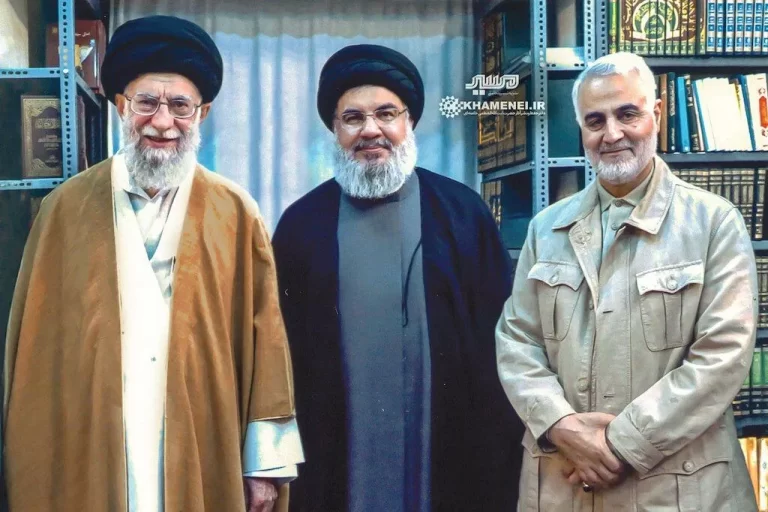
RUSSIAN FORCES IN SYRIA
Russia has a large naval base in Tartus, Syria. They have also built two airbases, one in the vicinity of the city of Palmyra and the other at the city of Latakia. The Russian air force stationed in Syria has flown thousands of missions and bombed rebel held areas, including cities and villages. The Russian military has severed Iran’s control over Bashar al-Assad, and in reality he is a vassal ruler of Vladimir Putin.
Israel and Russia have an agreement that Israel is allowed to strike Iranian targets in Syria. Russia is acting as a buffer in Syria to keep the Iranians from getting too close to the border of Israel.
Given the history of revolutions in Syria, it is just a matter of time until someone removes Bashar al-Assad from power.
TURKISH GENOCIDES
The Turkish government ordered the ethnic cleansing of the Armenians within its borders from 1914 to 1923. A total of 1.5 million Armenian men, women and children were murdered by the Turkish army. In the rural areas, entire villages were captured, the people forced into their homes, which were then set on fire. A favorite way to kill Armenians was to march them out into the Syrian Desert without food and water. Soldiers with adequate supplies watched as they slowly died.
The Turkish government also perpetrated ethnic cleansing against Assyrians at the same time. Some 300,000 men, women and children were murdered.
The government of Turkey denies this mass extermination ever took place.

SUMMARY
As presented in this briefing, there is no stability in the Middle East. The countries of Syria, Lebanon, Jordan, Iraq and Iran have multiple ethnic groups living among them.
There is a hate that simmers from the different denomination of Islam. The different ethnic groups date back to the empires of the Hittites, Assyria, and Babylon. They would try to subdue nations by bringing in other ethnic groups, and for the last 2,500 years, these displaced groups have never merged, but maintained their language, culture and religion.
This is the reason there have always been wars. The struggle will continue until Jesus takes control.
As far as I am concerned, President Trump made the correct decision to pull American troops from the endless tribal wars.
We must also remember that the fallen angels who ruled the empires and nations in times past are still in their places. They have not stopped their war games, using humans as pawns in a massive chess game.
This important fact is lost to most people who fail to understand that the Devil, fallen angels and evil spirits are real.
And he said unto me, O Daniel, a man greatly beloved, understand the words that I speak unto thee, and stand upright: for unto thee am I now sent. And when he had spoken this word unto me, I stood trembling.
Then said he unto me, Fear not, Daniel: for from the first day that thou didst set thine heart to understand, and to chasten thyself before thy God, thy words were heard, and I am come for thy words.
But the prince of the kingdom of Persia withstood me one and twenty days: but, lo, Michael, one of the chief princes, came to help me; and I remained there with the kings of Persia.Daniel 10:11-13
Then said he, Knowest thou wherefore I come unto thee? and now will I return to fight with the prince of Persia: and when I am gone forth, lo, the prince of Grecia shall come.
Daniel 10:20
Finally, my brethren, be strong in the Lord, and in the power of his might.
Put on the whole armour of God, that ye may be able to stand against the wiles of the devil.
For we wrestle not against flesh and blood, but against principalities, against powers, against the rulers of the darkness of this world, against spiritual wickedness in high places.Ephesians 6:10-12
1. See a series of newsletter articles entitled, “Trail of Blood and Murder” for more information on these individuals.
2. THE TRANSFER AGREEMENT, The dramatic story of the Third Reich and Jewish Palestine, Edwin Black, Carroll & Graf Publishers, Inc. , New York, 1984
You can use PayPal to make a donation or send a check in the mail. One time donations help temporarily but we need friends who will commit to giving regularly. Would you prayerfully consider doing so?
You can contact us if you have a prayer request or if you have any questions.
